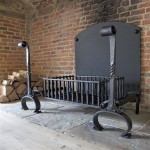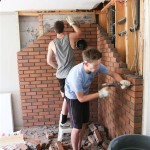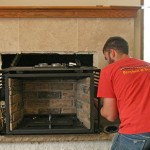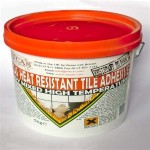Direct Vent Gas Fireplace Instructions: A Comprehensive Guide
Direct vent gas fireplaces offer a convenient and efficient way to add warmth and ambiance to a home. Unlike traditional fireplaces, direct vent systems utilize a sealed combustion chamber and a venting system that draws air from outside the home and exhausts combustion byproducts directly outdoors. This design minimizes heat loss and eliminates the need for a chimney, making installation simpler and more versatile. However, proper installation and operation are crucial for safety and optimal performance. This article provides a comprehensive overview of direct vent gas fireplace installation, operation, and maintenance.
Before commencing any work, it is essential to consult the manufacturer's installation manual for specific instructions pertaining to the model. These instructions supersede any general guidance provided here. Ignoring the manufacturer's recommendations can lead to safety hazards, void warranties, and compromise the fireplace's efficiency.
Key Point 1: Understanding Direct Vent Fireplace Components and Requirements
A direct vent gas fireplace system consists of several key components, each playing a vital role in its operation. These components include the firebox, burner assembly, gas valve, venting system, and control system. Familiarizing oneself with these parts is fundamental before attempting installation or troubleshooting.
The firebox is the enclosure that houses the burner and provides the aesthetic appearance of the fireplace. It's designed to withstand high temperatures and often incorporates decorative elements like logs, glass beads, or stone media. The burner assembly is responsible for mixing gas and air to create a controlled flame. Different burner designs exist, impacting the flame pattern and heat output.
The gas valve regulates the flow of gas to the burner. It is typically controlled by a thermostat or remote control, allowing for precise temperature adjustments. The venting system is critical. This system comprises two concentric pipes – one to draw in fresh air for combustion and another to expel exhaust gases. This design ensures a sealed combustion process and prevents the backflow of harmful fumes into the home.
The control system manages the overall operation of the fireplace. This can range from a simple on/off switch to a sophisticated electronic ignition system with remote control capabilities, programmable timers, and safety features like flame failure detection.
Prior to purchasing and installing a direct vent gas fireplace, certain prerequisites must be met. First, a gas supply line of adequate capacity must be present and readily accessible. This line should be installed by a qualified plumber or gas fitter in accordance with local codes and regulations. The location for the fireplace should be chosen with consideration for venting requirements. Direct vent systems must vent directly to the exterior, either horizontally through a wall or vertically through the roof. The length and configuration of the vent run are limited by the manufacturer's specifications.
Furthermore, the chosen location must comply with building codes regarding clearances to combustible materials. This includes walls, floors, ceilings, and nearby furniture. These clearances are typically specified in the installation manual and are crucial for preventing fires. Adherence to these codes is paramount and typically necessitates a building permit and inspection.
Key Point 2: Installation Procedures for Direct Vent Gas Fireplaces
Installing a direct vent gas fireplace involves several steps, each requiring careful attention to detail. Disconnect all electrical power to the area before beginning any work. The process begins with preparing the installation site according to the manufacturer's instructions. This may involve framing an opening in the wall or building a platform to support the fireplace.
Once the site is prepared, the fireplace unit can be positioned. Ensure the unit is level and securely fastened to the building structure. Next, the venting system needs to be installed. Each section of vent pipe must be properly connected and sealed according to the manufacturer's guidelines. Use the appropriate sealant or gaskets recommended for the vent system. Proper sealing is essential to prevent leaks of carbon monoxide. The venting system must be pitched correctly to allow for proper drainage of condensation.
The gas line connection should only be performed by a licensed plumber or gas fitter. Follow all local codes and regulations regarding gas line installation. Prior to connecting the gas line, ensure the gas supply is turned off. Use a pipe wrench to tighten all gas line connections securely. After connecting the gas line, test all connections for leaks using a soap and water solution. If bubbles appear, tighten the connection until the leak is resolved.
With the venting and gas connections completed, the electrical connections can be made. Connect the fireplace to a dedicated electrical circuit if required. Ensure the wiring is properly grounded. Install any optional accessories, such as remote controls or blowers, according to the manufacturer's instructions.
Before completing the installation, perform a thorough inspection of all connections and components. Verify that all clearances to combustible materials are maintained. Ensure the venting system is properly supported and secured. After the inspection, a qualified technician should perform a start-up test to verify the fireplace is operating safely and efficiently. This test will involve checking the gas pressure, flame pattern, and venting system performance.
Key Point 3: Operation, Maintenance, and Troubleshooting
After installation, understanding the proper operation and maintenance of the direct vent gas fireplace is crucial for long-term performance and safety. Familiarize oneself with the control system and its functions. Learn how to ignite the fireplace, adjust the flame height, and use any available timer or thermostat settings.
Regular maintenance is essential for ensuring the safe and efficient operation of the fireplace. At least annually, the fireplace should be inspected and cleaned by a qualified technician. This inspection should include the burner, venting system, and control system. The burner should be cleaned to remove any debris or deposits that could affect the flame pattern. The venting system should be inspected for blockages or leaks. The control system should be checked for proper operation and any signs of wear or damage.
The glass door or panel should be cleaned periodically using a specialized fireplace glass cleaner. Avoid using abrasive cleaners, as these can scratch the glass. The surrounding area around the fireplace should be kept clean and free of combustible materials. Never store flammable items near the fireplace.
Certain problems can arise with direct vent gas fireplaces. If the fireplace fails to ignite, check the gas supply and pilot light. Verify that the gas valve is open and that the igniter is working properly. If the flame is weak or unstable, the burner may be dirty or the gas pressure may be incorrect. If the fireplace emits unusual odors or smoke, immediately turn off the fireplace and contact a qualified technician.
Another common issue is condensation forming on the glass. This is normal, especially during initial operation or when the fireplace is first started. However, excessive condensation can indicate a problem with the venting system or combustion process. If the venting system is blocked or restricted, it can cause condensation to accumulate on the glass. A malfunctioning gas valve can also cause incomplete combustion, leading to condensation. If excessive condensation persists, contact a qualified technician to inspect the fireplace.
Carbon monoxide detectors are crucial for safety and should be installed in the vicinity of any gas-burning appliance, including direct vent fireplaces. Test the carbon monoxide detectors regularly to ensure they are functioning properly. Replace the batteries in the detectors at least once a year. If the carbon monoxide detector alarms, evacuate the premises immediately and contact emergency services.
By understanding these instructions and adhering to the manufacturer's guidelines, one can safely and effectively operate and maintain a direct vent gas fireplace, enjoying its warmth and beauty for years to come. Regular professional inspections and maintenance are strongly recommended to prevent problems and ensure continued safe operation.
Gas Fireplace Venting Explained Heat Glo

What Are The Best Ways To Vent A Gas Fireplace Zoroast
Gas Fireplace Venting Explained Heat Glo

Fireplace Cover To Keep Cold Air Out

Bdv7 Series Direct Vent Gas Fireplace Mhsc

How To Install A Direct Vent Pipe

How To Install A Direct Vent Fireplace 2024 Efireplace

8kx Direct Vent Gas Fireplace Specifications And Installation Guide

Mldv Direct Vent Gas Fireplace Mhsc

How To Install A Gas Fireplace Diy Built In








